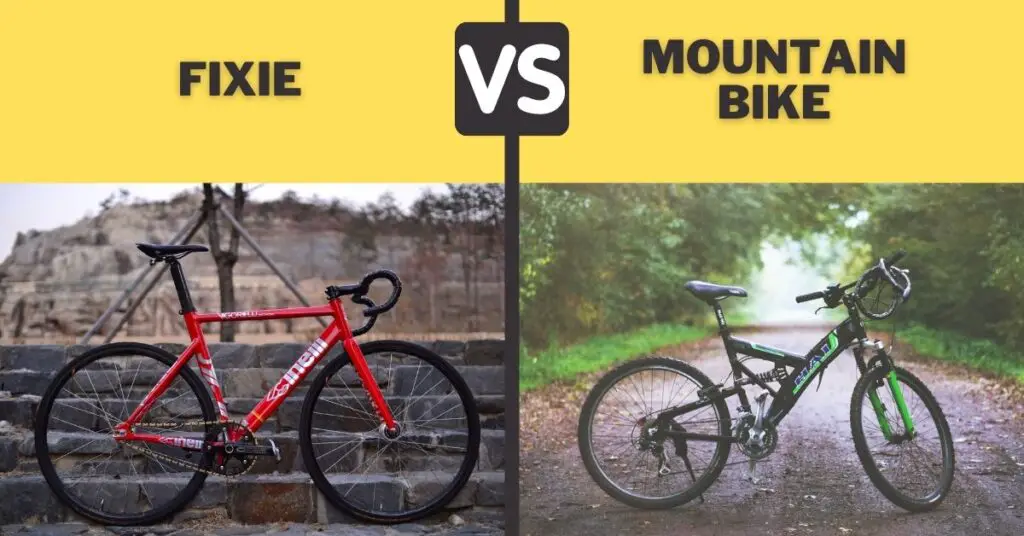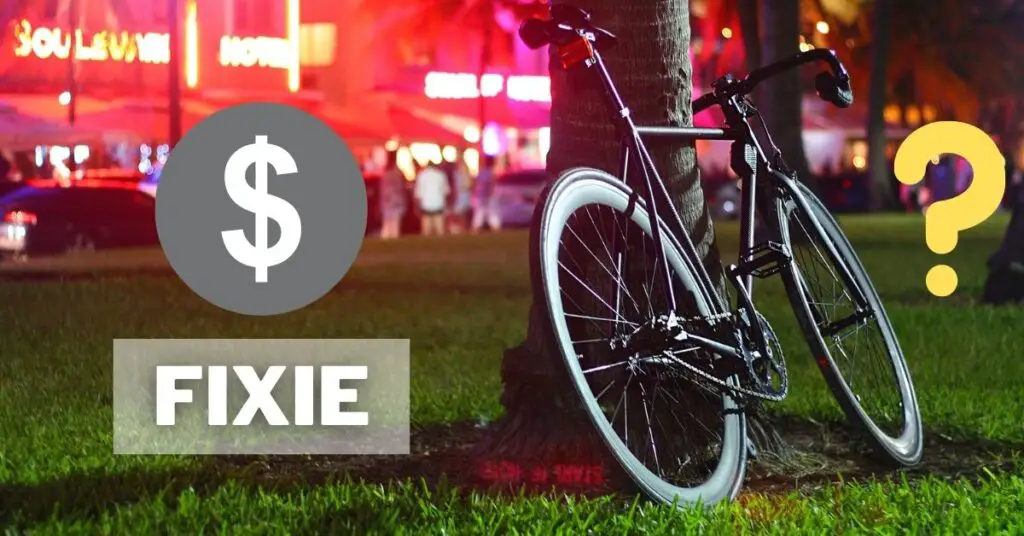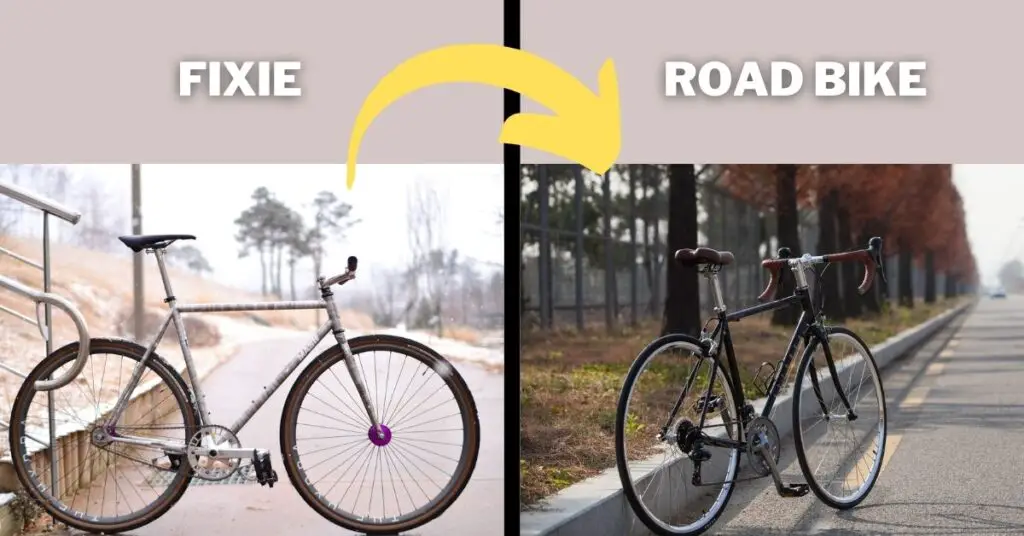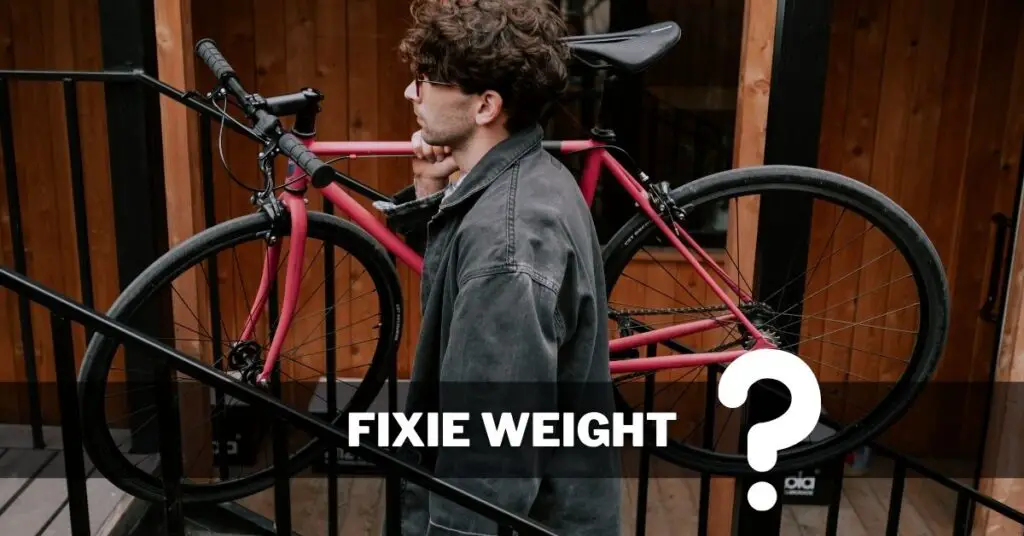It is natural to be worried about a bike that is single-speed without the freewheel capability or any gears. Fixed gear bikes are a source of controversy in the US. These bikes may seem dangerous, but you have to remember that this was the primary design of the bikes before the invention of the cassette.
Today, fixes are no more than a fashion statement. They have everything a bike needs: a handlebar, two wheels, pedals, chain, frame, pinion, and a plate. But with Fixed gear bikes, you cannot stop peddling.
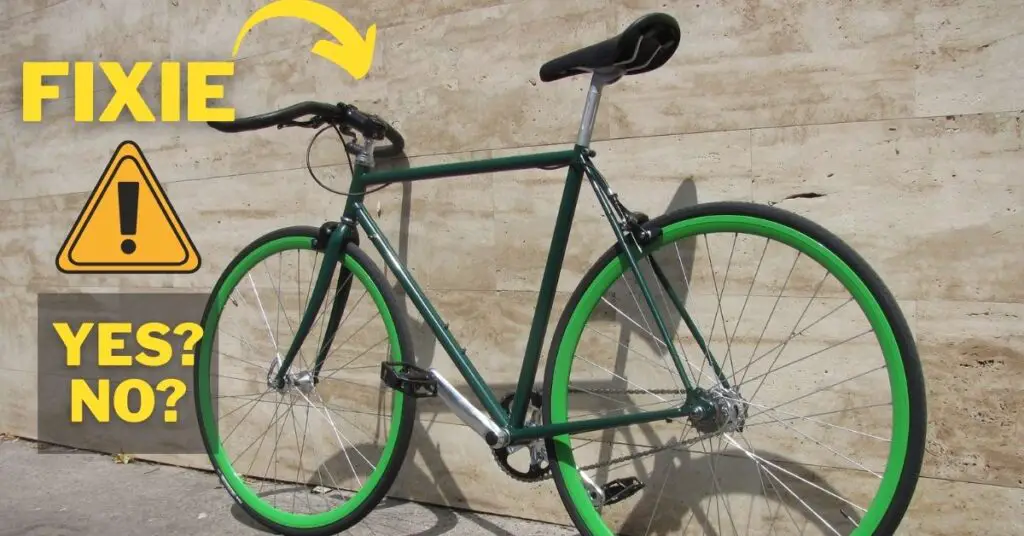
Are Fixed Gear Bikes Dangerous?
Fixed gear bikes are no more dangerous than an ordinary road bike if used within your control limits. However, Fixies do not have breaks and thus can take about twice the distance of a regular road bike to stop.
An inexperienced rider is more likely to flip over his bars on emergency braking on a road bike than on a fixed gear bike.
Fixed gear bikes are a craze among teenagers. However, in the hands of inexperienced riders, these bicycles can sometimes be dangerous. This trend has contributed to the deaths of high school students across the US.
Risks Associated With Fixed Gear Bikes
Let’s look at the three most common fixed gear bike dangers that are not found with freewheel bicycles. When used and maintained properly, fixies are as safe as any other bike, but you should look out for the following……..
1- PEDAL STRIKE
Since the pedals are always moving, there is a likelihood of the pedals striking the ground. Unlike the single-speed bikes which allow you to coast around corners with the pedals horizontal, fixies do not have this option.
So it is possible that the rear wheel is lifted off the ground, and down you go.
What to do?……
A. The ideal crank length should be 165mm giving a ground clearance of about 170mm. Make a point of ensuring that the pedals do not stick out too far.
B. To avoid pedal strikes, lean your upper body towards the inside of the turn when cornering as this provides better cornering clearance albeit with poor steering.
2- DERAILMENT AND WHEEL LOCK
In a freewheel bike, throwing a chain is not a problem. However, on a fixed gear, this can be disastrous.
Should the chain come loose from the chain wheel, it might hang or loop around the rear sprocket causing the rear wheel to lock up. Should this happen while the ride is leaned over in a turn, a crash is imminent.
3- BODILY INJURIES
you will want to keep your fingers clear of the chain while hand pedaling on the repair stand. You can easily slice off your finger if it gets jammed in the chain.
Dangers in the Learning Phase
It is important to note that there is a significantly steep learning curve when it comes to riding fixies. It takes time, and several inevitable mistakes before getting accustomed to full-time pedaling and learning how to stop without brakes.
Due to the unique riding technique, the risk of an accident at the beginning stages of riding a fixed gear is significantly higher than with other bike models.
Emergency braking on these bikes while riding along vehicular traffic can be more dangerous. Riders must ensure they remain visible to cars at all times.
Stopping a fixie abruptly is the most challenging part and your legs must be strong enough to instantly stop the pedals.
Some fixies are fitted with a hand brake to slow them down. Others are not and here is where the problem lies. The lack of a hand brake can result in a fatal accident.
Is Skid Stopping the Solution?
Skid-stop is the most common braking style whereby the rider uses his legs to lock up the rear wheel, skidding to a halt. Locking one leg at the bottom of a pedal stroke locks the rear wheel resulting in a skid.
Fixie enthusiasts argue that the skid-stop technique should be considered an effective braking mechanism. However, this technique is both difficult and ineffective, especially when employed by rookies who are new to riding without brakes.
How To Safely Ride a Fixed-Gear Bike
For the most part, riding a fixie has more to do with the rider’s control. After all, the pedals are always on the move as the bike is in motion.
Here are a few tips on how to safely ride your fixed gear bike…….
1- Stick to Bike Lanes
Enclosed bike lanes are the best for beginners. While they will still have obstacles, they should be far less than on the main streets. Avoid the temptation of driving against the traffic.
2- Have & Use Brakes
Despite being a legal requirement, most riders still ride brakeless. A fixed-gear bike does not need two brakes. The front brakes are enough. Having brakes will help your stop fast on emergency stops.
If the chain falls off, the cyclist loses the rear brake. Without the front wheel brakes, this would result in a disaster.
A rear hand brake is optional since you can use leg motion to resist pedal motion, thus stopping the bike.
3- Don’t Undermine the Importance of a Helmet
No Brainer! Is it? This applies to all riders. A helmet protects you against head injuries. You can still get injured even when wearing a helmet. But it’s always better to reduce the odds.
4- Use Reasonable Speed
Speed is the thrill of riding a bike. However, there is nothing as horrifying as going fast on a bike only to realize you can’t stop.
If you are new to fixies, start at just a little more than walking speed, more or less. Always assess the traffic to avoid surprises.
5- No Headphones
You need your ears as much as you need your eyes. As a beginner, you need to be aware of your surroundings. Also, your headphone cord could get tangled in the front wheel which is not fun.
What Happens When You Stop Pedalling a Fixie?
With a fixed gear bike, you never stop pedaling. If you were to force the pedals to a stop, the rear wheel would skid, forcing you to a stop.
If you forget to pedal while in motion, there’s a fair chance you will get hoofed off and crash.
If you were to stop pedaling, the pedals would jerk you around so violently that you learn not to do that again. You can however slow down by gently resisting the forward momentum, but you can never try and stop pedaling while in motion.
You can still have your feet completely off the pedals but you might not have your feet back on until the bike significantly slows down or comes to a stop. That’s the closest you can get to coasting on a fixed gear.
Even on a flat road surface where a freewheel cyclist would enjoy the power of coasting, a fixed-gear rider cannot afford such luxury.
What’s the Way Out?
Learning to ride a fixed gear and developing the necessary strength, coordination, and efficiency takes time. Once have muscle and coordination, you enjoy the sense of control when pedaling directly affects the wheel rotation.
Riding a fixed-gear puts the rider in tune with the bike, giving them additional ways to control the bike.
Riding a fixed-gear bike is a workout. When riding uphill or downhill, you simply cannot stop pedaling. For experienced riders, fixies are for performance, not coasting. As long as the rear wheel turns, so do the pedals.
Don’t Confuse a Fixed-Gear For a Freewheel Bike!
It is easy to get confused between Fixed gear bikes and freewheel bikes. It is necessary to understand this difference to assess the dangers.
| FIXED GEAR BIKES | FREEWHEEL BIKES |
| If pedaled backward, the rear wheel slows down or moves the bike backward if from a stop. | If you pedal a freewheel bike forward, it moves forward. If you stop pedaling, you will coast, and if you pedal backward, nothing will happen. |
| If you stop pedaling while the rear wheel is in motion, the pedals will continue turning. So you don’t enjoy coasting. | They allow coasting which means the rider can rest his legs, makes climbing easier, and descents faster. |
| Because you have to pedal, it is a good workout. | coasting makes freewheel riding a less effective workout. |
| You are less likely to lose speed. | It also leaves gaps in your pedal strokes thus losing speed on a flat surface. |
In the case of a Fixie, If a rider attempts to coast, the pedals continue turning thus can disrupt the rider’s balance and possibly leading to an accident. In addition, the more tired a rider becomes, the less control they have.
Importance of Having a Brake on a Fixie!
Riding a fixie without brakes is a bad idea. If you have any sense of self-preservation, having a braking system will help you slow much easier each time you go through an intersection or making an emergency stop.
Besides, the need for constant extra vigilance drains the fun out of cycling.
At least have the front brakes to help stop the bike as fast as possible. As you apply the front brakes, there is no weight on the rear wheel, therefore no traction, and the bike can halt in an instant with ease.
Riding a fixie gives you a direct feel of the rear-wheel traction, dictating how hard you should apply the front brakes without the rear wheel lifting off the ground.
You don’t need rear brakes on a fixed gear bike. Applying back pressure on the pedals will provide the braking needed for the rear wheel. Locking up the rear wheel and making it skid is quite easy unless you are on high speed.
Final Thoughts!
Fixed gear bikes are not dangerous unless ridden without brakes. Essentially, all bikes were fixed gear before coasting came along adding efficiency.
While there are risks associated with fixies, much of the risks can be avoided with ease. Despite the risks involved, fixed gear bikes are still common among the American youth and have ended up being a fashion statement over the last few years.
I recommend going through the learning curve and using brakes to be safe.
Cheers!

